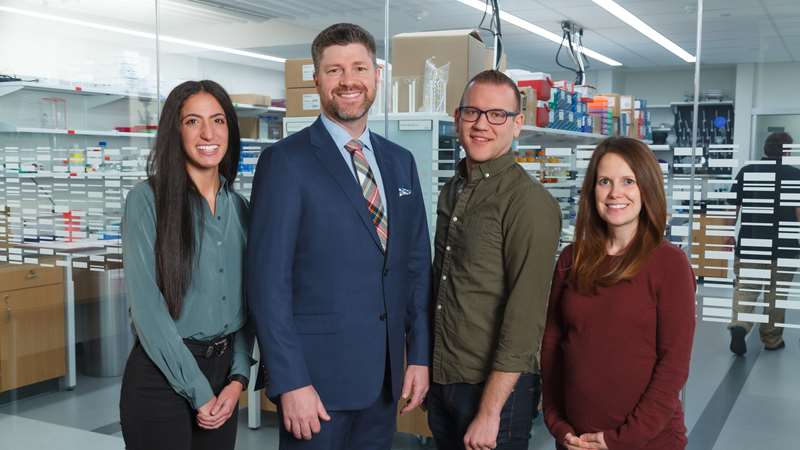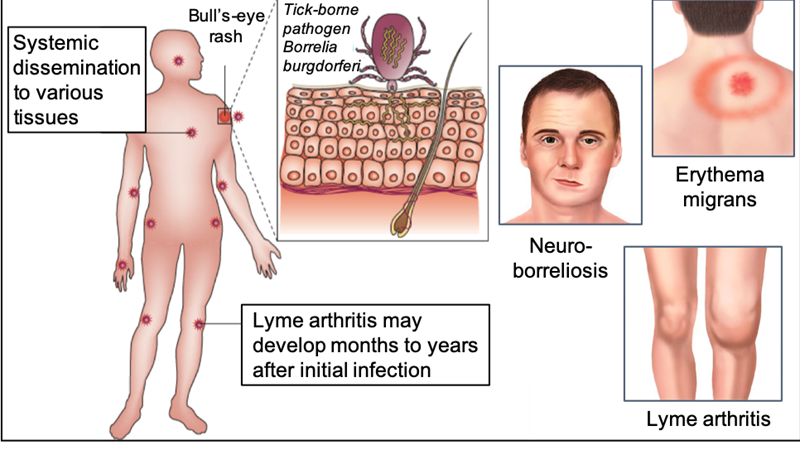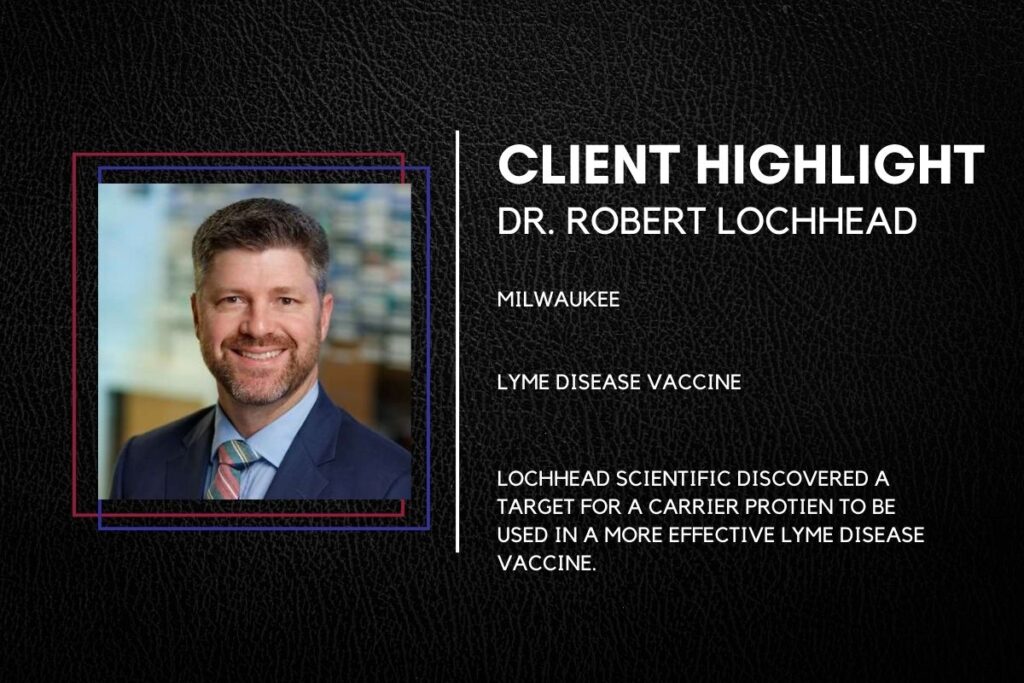Robert Lochhead PhD., Assistant Professor at the Medical College of Wisconsin and Founder of Lochhead Scientific., began his career path as a student using mouse models to study immunology. He focused on how Lyme disease bacteria affect the host immune response and vice versa.
“As I was writing my dissertation,” said Lochhead. “I realized that a lot of work we do using traditional mouse models that a lot of us in academia use, was not accurately reflecting the disease itself.”
After graduate school Lochhead decided that he wanted to work in a clinical focused lab at Massachusetts General Hospital in Boston for his postdoctoral research. He trained under Doctor Alan Steer, a rheumatologist who first discovered Lyme disease back in the 1980s.
“That was a career changing experience,” said Lochhead. “I was able to meet with patients, talk with them about their experiences, and work directly with human patient samples to really understand the human disease at a molecular level.”
“I was attracted to this field because of the complexity between the interactions between the bacteria and our immune system, but I really became passionate about finding ways to help patients from my experience directly dealing with patients who have been suffering for years with this debilitating disease. It’s really devastating, and you can’t help but be affected by seeing some of these experiences. There are almost half a million people who get Lyme disease in the United States every year, and a subset of those get these lingering symptoms, and no one really knows why. That’s extremely scary.”
Over half of the patients who’ve received treatment for Lyme disease can have lingering symptoms such as arthritis, neurocognitive disorder issues, and chronic pain. The cause is unknown.
“In order to really understand ‘why’ to any question, you need some sort of manipulative model,” said Lochhead. “There weren’t any model systems in mice or anything else, so one of my major goals of the last six years since I’ve joined Medical College of Wisconsin is to develop some new mouse models.”
Fortunately, some major pharmaceutical companies have taken up the mantle of getting the vaccine back on the market. Although there is a lot of excitement about this new product, it is essentially the same vaccine that was available before.
“The ideal vaccine is one that provides, 85-90% protection, last three to five years at least, and protects against a wide range of different types of bacteria,” said Lochhead. “That’s for any vaccine. Right now, the current Lyme disease vaccine candidates only protect against some of the strains of Borrelia, they only last a year and are about 75 to 80% effective. There’s a gap and that’s the piece that our product is filling”


Lochhead’s team is taking a scientific immunological approach to custom designing a vaccine to address some of the key weaknesses of the current vaccines being developed. More specifically, his team attached a piece of protein to the vaccine that boosts the T cell side of a person’s immune response which determines how strong, how broad and how long lasting a vaccine works.
“It’s called a carrier protein,” said Lochhead. “This is not new. These things are used in other vaccines. It just hasn’t been used in Lyme disease because we’ve not known any targets. We discovered a target. We’ve exploited that to basically short circuit the enemy evasion mechanisms of the bacteria to really get that strong T cell response to the vaccine that will give you long lasting, broad, potent immune protection.”
Lochhead now has an innovative product on his hands and is working with the Center of Technology Commercialization to commercialize it through the SBIR/STTR program.
“We’re doing the STTR process, and it is extremely daunting,” said Lochhead. “I write a lot of NIH and Department of Defense grants and I’d like to think I’m good at them because I’ve won some of them. These are different beasts altogether. I’m in academia. I’m not thinking about making a product commercializing a product, I think about the science.”
Lochhead emphasizes the importance of working with people who think about the business side of an innovation. People who think about end users, marketing, and developing research into a product.
“Having an opportunity to do the pitch was great to get feedback and understand how I need to change my story, not because it’s wrong, but because the emphasis is not so much on the science but on the business side of things.” Lochhead not only works with CTC’s free consultants, but he also won one of CTC’s micro grants which gives him the financial resources he needs to hire a STTR consultant.
“I was able to get paired with a fantastic person who consults with small business people in academia to help write STTR’s. I’m paying her money that’s getting reimbursed to me so it’s free for me. I’m getting this wonderful resource to help fill the gaps in how I’m pitching my story, how I’m writing the grant to a different audience, things I maybe didn’t consider on the nonscientific side of things that I should. We’re just in the beginning process, I’m submitting the grant in September, but already I can tell that I’m going to be way ahead of the game because of the microgrant program.”
